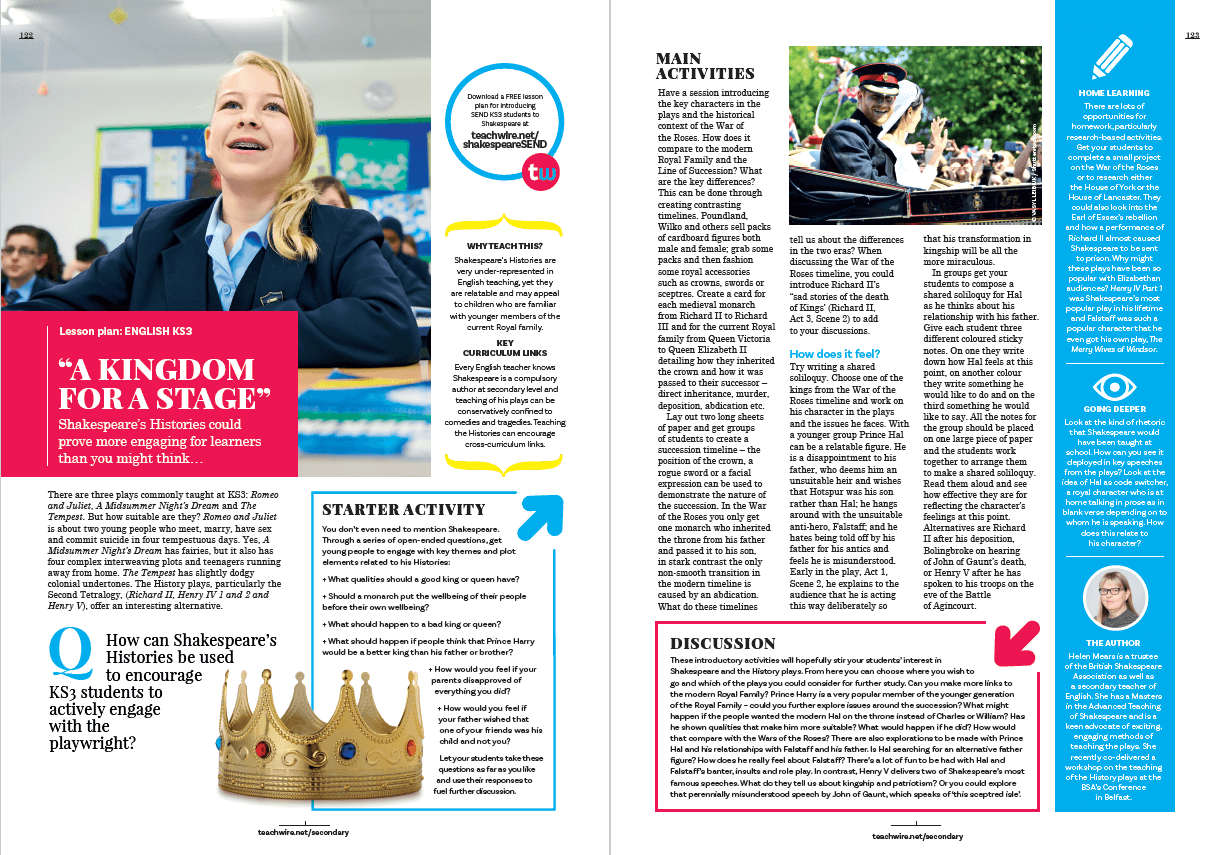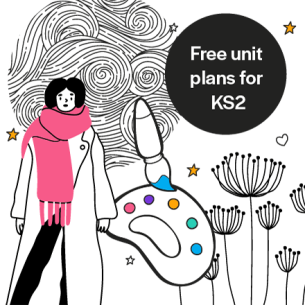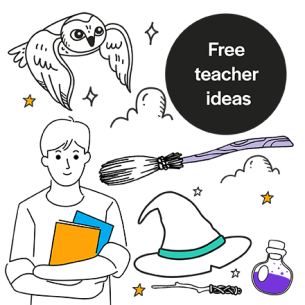There are three plays commonly taught at KS3: Romeo and Juliet, A Midsummer Night’s Dream and The Tempest. But how suitable are they?
Romeo and Juliet is about two young people who meet, marry, have sex and commit suicide in four tempestuous days.
Yes, A Midsummer Night’s Dream has fairies, but it also has four complex interweaving plots and teenagers running away from home.
The Tempest has slightly dodgy colonial undertones.
The History plays, particularly the Second Tetralogy, (Richard II, Henry IV 1 and 2 and Henry V), offer an interesting alternative.
Why teach this?
Shakespeare’s Histories are very under-represented in English teaching, yet they are relateable and may appeal to children who are familiar with younger members of the current Royal family.
Key curriculum links
Every English teacher knows Shakespeare is a compulsory author at secondary level and teaching of his plays can be conservatively confined to comedies and tragedies. Teaching the Histories can encourage cross-curriculum links.

Similar resources
- Poetry analysis – KS3 and KS4 English lesson plans
- Hamlet summary – Short plot outline, characters, themes & setting
- Shakespearean insults – Mini quiz, insult generator and more
- An Inspector Calls Act 2 – Revise characters & relationships
- The Tempest quotes – 10 posters and quote worksheet for KS3/4










